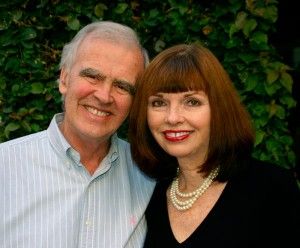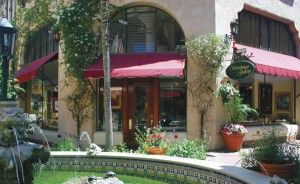Owners of Waterhouse Gallery • Santa Barbara, CA
By Bonnie Gangelhoff
 What are some of the biggest changes you have seen in the art world during your career? When we opened the gallery in 1984, plein-air painting was not as popular as it is today. Landscapes and wildlife art were much more in demand back then. Figurative and still-life painting on the West Coast was primarily western—cowboys and Native Americans. Another tremendous change is the number of younger artists in their 20s who are extremely talented and whose quality of work is way beyond their years. A lot of major artists are giving workshops, and schools like the Academy of Art University in San Francisco are contributing to their growth and education. In the old days, artists came from the illustration fields and switched into fine art at an older age. Artists once got advances, too. Another change is that museum shows have grown over the last five years.
What are some of the biggest changes you have seen in the art world during your career? When we opened the gallery in 1984, plein-air painting was not as popular as it is today. Landscapes and wildlife art were much more in demand back then. Figurative and still-life painting on the West Coast was primarily western—cowboys and Native Americans. Another tremendous change is the number of younger artists in their 20s who are extremely talented and whose quality of work is way beyond their years. A lot of major artists are giving workshops, and schools like the Academy of Art University in San Francisco are contributing to their growth and education. In the old days, artists came from the illustration fields and switched into fine art at an older age. Artists once got advances, too. Another change is that museum shows have grown over the last five years.
How have collectors’ tastes changed over the years? I think a lot of buyers are getting more sophisticated. They are much more exposed to fine art through art magazines, and they are more knowledgeable about what is good and bad art. There is just a much greater awareness about art.
 What prompted you to create the annual Great American Figurative Show? Ralph: It was Diane’s idea. There was no real focus on figurative art. It was kind of a secondary thing sitting in the back of galleries. But Diane was really drawn to figurative work and was passionate about it. And slowly, artists were starting to paint the figure again. We decided, “Let’s do the show.” Diane: We started the figurative show in 2006. We felt that most collectors already had landscapes in their collections, and we thought this would be a whole new genre for them. No one else seemed to be doing figurative shows then. The show isn’t necessarily nudes but what we call “conversational figures”—people doing things like drinking coffee, dining, or reading a book. Viewers get a chance to look into other people’s lives without actually being there. We had works by 23 artists in the show when we started it in 2006, and in 2011 we had works by more than 50 artists. We invite the artists we admire. But we jury others in, too, and every year we get more and more applications—more than we can accept.
What prompted you to create the annual Great American Figurative Show? Ralph: It was Diane’s idea. There was no real focus on figurative art. It was kind of a secondary thing sitting in the back of galleries. But Diane was really drawn to figurative work and was passionate about it. And slowly, artists were starting to paint the figure again. We decided, “Let’s do the show.” Diane: We started the figurative show in 2006. We felt that most collectors already had landscapes in their collections, and we thought this would be a whole new genre for them. No one else seemed to be doing figurative shows then. The show isn’t necessarily nudes but what we call “conversational figures”—people doing things like drinking coffee, dining, or reading a book. Viewers get a chance to look into other people’s lives without actually being there. We had works by 23 artists in the show when we started it in 2006, and in 2011 we had works by more than 50 artists. We invite the artists we admire. But we jury others in, too, and every year we get more and more applications—more than we can accept.
What are some of the biggest challenges you face as gallery owners? I think you always have to have new things. You can’t stagnate. If we had stagnated, we would still be selling just wildlife.
Of what accomplishments are you most proud? The Great American Figurative Show, and launching the careers of great artists such as Jeremy Lipking, Calvin Liang, and Lindsay Goodwin.
Featured in May 2012.





